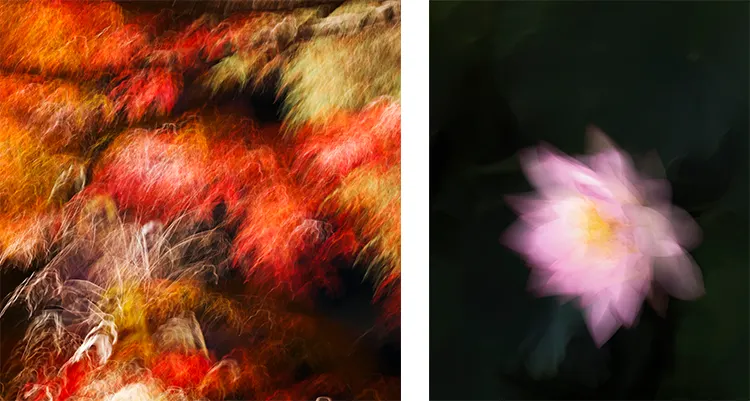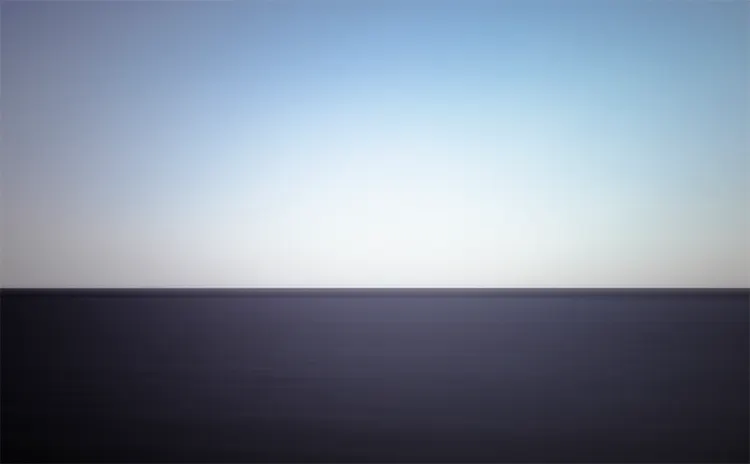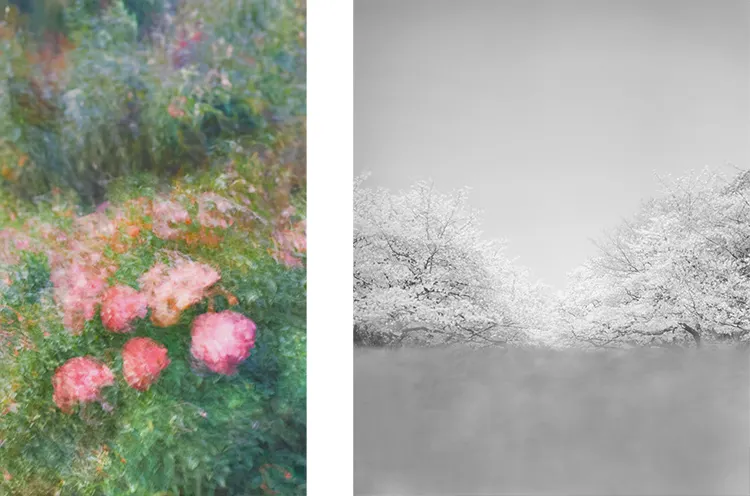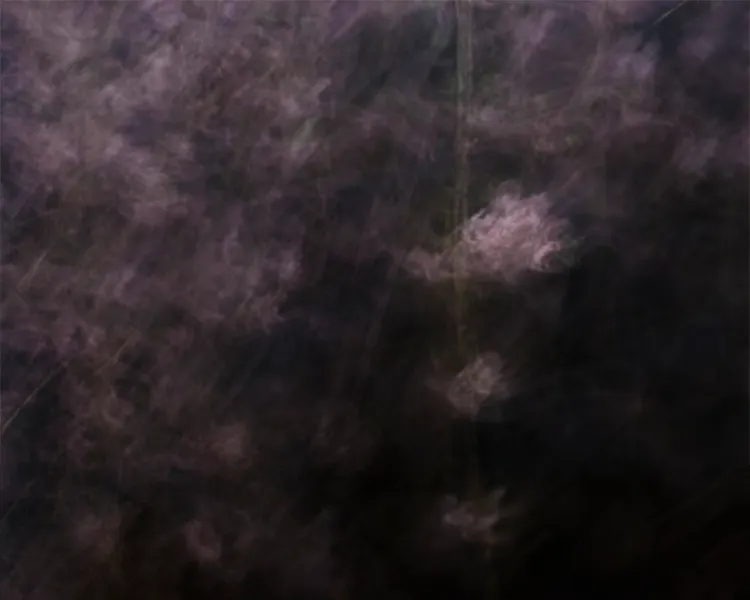“My images should be called ‘chronograph’ rather than ‘photograph’—they capture time itself, not just a single moment.”
Jiro Hiraike: A Mathematical Mind Behind the Camera
Jiro Hiraike approaches photography from an unconventional perspective, shaped not by formal artistic training but by his background in mathematics. His early academic focus on logic and structure continues to inform his creative process, enabling him to construct images with a meticulous attention to order and relationships. While many photographers rely on instinct and emotion to frame their compositions, Hiraike takes a methodical approach, considering how each element interacts within the frame. His understanding of mathematical structures influences the way he perceives spatial relationships, patterns, and visual harmony in his work.
Despite his analytical foundation, Hiraike’s art is not solely defined by technical precision. A significant aspect of his creative philosophy is rooted in Buddhist thought, particularly the concept of emptiness. In Buddhist philosophy, emptiness does not signify a void but rather the interdependence of all things—nothing exists in isolation. This perspective deeply informs his work, leading him to explore themes of perception, time, and existence. His images are not merely visual records but reflections of an underlying philosophical inquiry.
Hiraike categorizes his photographic works into two distinct themes: metaphysical and historical. The metaphysical images revolve around the exploration of emptiness, time, and cognition, while the historical works pay homage to artistic traditions and styles of the past. These two approaches, though distinct, are connected by his logical methodology and conceptual rigor. Through both, he challenges the viewer’s perception, encouraging deeper contemplation about what is seen, what is remembered, and what is ultimately real.

autumn leaves (abstract)
lotus
The Art of Time: Jiro Hiraike’s Conceptual Vision
For Hiraike, time is not merely a backdrop for his images but the central subject itself. His work questions the nature of time and human perception by using long exposure techniques that strip away the instantaneous moment. Traditionally, photographs capture a fraction of a second, preserving a singular moment in time. Hiraike disrupts this convention by extending exposure durations, creating images that transcend the notion of temporality altogether.
This manipulation of time alters the way viewers perceive his photographs. In works such as Calmscape, where an eight-minute exposure dissolves human figures into an ethereal mist, the individuals in the scene lose their distinct identities. The image removes the specificity of time, allowing the viewer to interpret it as a scene from the past, present, or even the future. This effect highlights the transient nature of human existence, reinforcing the idea that our perception of reality is often unreliable.
His approach to photography aligns with the idea that cognition is intrinsically tied to time. In Duration, his long-exposure images of the sea and sky depict a landscape that has remained unchanged for millennia. The title Duration is intended as a counterpoint to the idea of a “moment.” Even if one were to compile a series of momentary photographs from all times and places, it would still be impossible to locate Duration in a specific time—because the work is not tied to a moment at all. Through long exposure, it captures the absence of a fixed moment and the absence of tense itself, where past, present, and future are not merely blurred but inherently indistinguishable. Similarly, in Flowers That Are Bloom in the Void, a one-second exposure captures the motion of cherry blossoms swaying in the wind, resulting in an impressionistic blur that challenges the boundaries between stillness and movement. These works exemplify Hiraike’s ongoing exploration of how time influences perception and meaning.

duration
Structure, Emptiness, and the Philosophy of Photography
Hiraike’s artistic philosophy extends beyond time to the very foundations of composition and meaning. His understanding of the Buddhist principle of emptiness—a concept that asserts that everything derives its meaning through relationships rather than inherent qualities—profoundly shapes his creative process. Rather than constructing images in a step-by-step manner, he envisions each work as already complete, allowing the relationships between composition, color, and light to emerge naturally.
This philosophical approach leads him to reject the conventional constructivist method of art-making, where elements are arranged systematically. Instead, he imagines a finished image and then aligns his creative decisions to match this vision. This perspective challenges traditional artistic processes, suggesting that meaning is not built piece by piece but arises from the interdependence of all elements within an artwork. By working in this manner, Hiraike aligns himself with the lineage of artists who view creation as an intuitive discovery rather than a mechanical assembly.
His fascination with structure extends to his technical approach to photography. Rather than treating a camera as a simple tool for capturing images, he views it as an instrument for recording time. By adjusting shutter speed, he manipulates how time is represented within a single frame, redefining what a photograph can convey. He considers his images to be “chronographs” rather than photographs, as they do not freeze a singular moment but instead encapsulate the passage of time itself. This perspective sets his work apart, merging scientific precision with philosophical depth.

at the rose garden
calmscape
Jiro Hiraike: A Legacy of Influence and Artistic Inquiry
Hiraike’s inspirations span multiple disciplines, from mathematics and architecture to classical painting and modern photography. Figures such as John von Neumann and Walter Gropius influence his structured way of thinking, while artists like Kazimir Malevich and Wassily Kandinsky inspire his exploration of abstraction. His admiration for historical figures such as Leonardo da Vinci and Hiroshige Utagawa further reinforces his interest in blending technical mastery with artistic innovation.
In his ongoing project, Tracing History, Hiraike explores established artistic styles and investigates how they can be expressed through the medium of photography. Rather than reinterpreting existing artworks, his approach originates from a general theoretical framework, developed into photographic theory, and finally realized through photographic expression. Movements such as Impressionism, Cubism, and Suprematism are not translated from painting into photography, but instead reimagined from the ground up using photographic principles. This methodology preserves the authenticity of the visual languages while also generating new questions about how artistic techniques evolve across media.
Despite his introspective nature, Hiraike envisions expanding the reach of his work. He dreams of integrating his photography into contemporary music performances, creating immersive visual experiences that complement avant-garde compositions. His work’s ability to transcend traditional photographic constraints suggests limitless possibilities for future collaborations. By continuously questioning the nature of time, perception, and artistic expression, Hiraike cements his place as a thinker and creator whose work challenges the fundamental ways we experience the world.
You can explore Jiro Hiraike’s artwork on his Singulart page here: LINK.








